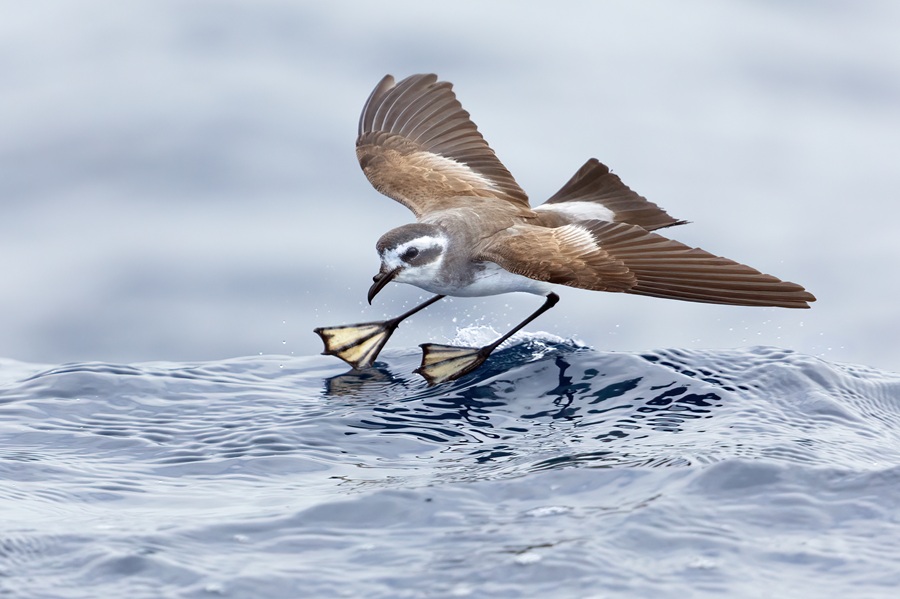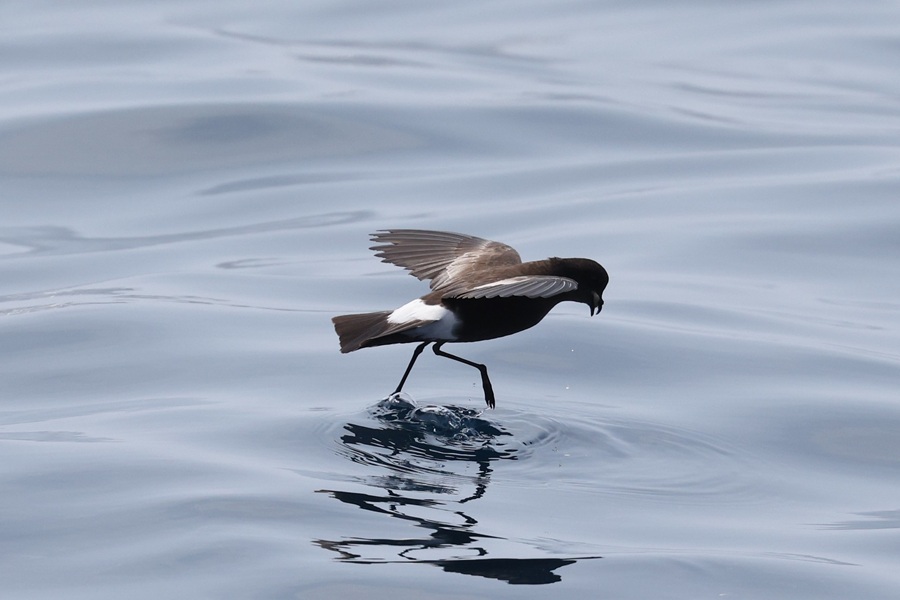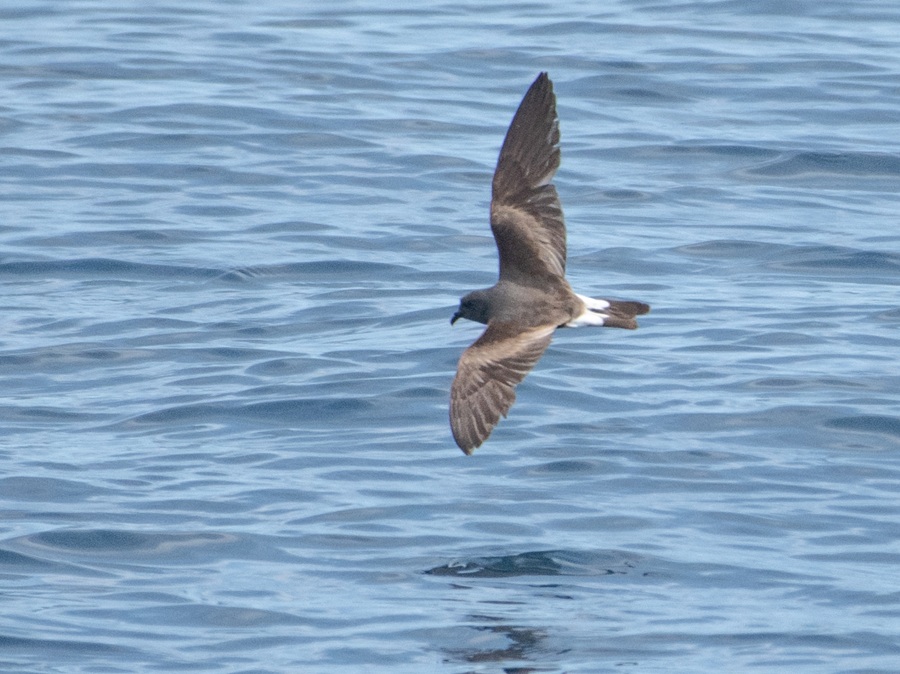I was standing forward as the fast ferry flew from Boston to Provincetown when I saw the tiny, robin-size bird — or was it a water bat? — weaving frantically back and forth in front of the bow. At first the bird appeared desperate. But upon further observation, I realized it was playing: dipping its tiny black webbed toes into the sea.
What I was seeing was a storm petrel. It swerved and rose, then dove again and wetted its feet. It was flying, but it seemed to desire to walk on the thick salty liquid under our boat. The northern storm petrels, in the family Hydrobatidae, are members of the order Procellariformes. This includes the albatross and other pelagic or sea-living birds such as shearwaters. And they are fascinating creatures. They can fly without flapping their wings, they almost never land, and they lay one egg a year, if that.

Despite their small size, these are some of the most seaworthy birds on the planet. They rarely are driven to land except by hurricanes and may be the only birds seen during rough seas. They do this by a method of bird flight called dynamic soaring — a term ornithologists have come to use to define the way members of Procellariformes move across oceans. They use currents and thermal upwellings to efficiently “fly” without beating their wings, corkscrewing their way across hundreds of miles of open ocean, eating occasionally on the wing, and stopping to feed and rest when necessary.
Storm petrels’ bodies are shades of gray and black, but all have white rumps, flashed as they fly before you. The food they eat is caught daintily from the surface, taken as they hover over squid, small invertebrates, and zooplankton. They share a distinctive feature in their bills that allows them to separate the salt from ocean water, a feature found in many species of their cousins including the albatrosses and other petrels. Specialized “salt glands” take in excess salt from their bloodstreams and excrete it through tubes on the top of their bills. That’s where the common nickname for the Procellariformes — “tubenoses” — comes from.

The name “petrel” is thought to be from Peter, as early Christian mariners associated this bird with the story of the New Testament saint’s brief stint walking on water. The Latin family name Hydrabatidae is most likely based in the two Greek words hydor, meaning water, and bates, meaning walker. So, the ancients must have seen what I did.
These birds have another great nickname, also from the early Christian mariners: “Mother Carey’s Chickens,” which implies they are birds blessed by the Virgin Mary. The common name storm petrel refers to the fact they were often seen over the ocean in large groups before a storm, forewarning crews to prepare for the weather.

The migration of our common Wilson’s storm petrel (Oceanites oceanicus) is a dizzying flight from the Arctic to the Antarctic, breeding in rocky crevices. The incubation period is one of the longest for all bird species: 50 days of sitting on the one egg. Why? The eggs can be up to 40 percent of the female’s mass.
When the young birds leave the nest, they become independent, able to surface feed on open water just as their parents do.
The next time you find yourself on a boat or the fast ferry, be on the lookout for these bat-like birds, marvels of the open water and true marathoners of our water world.



